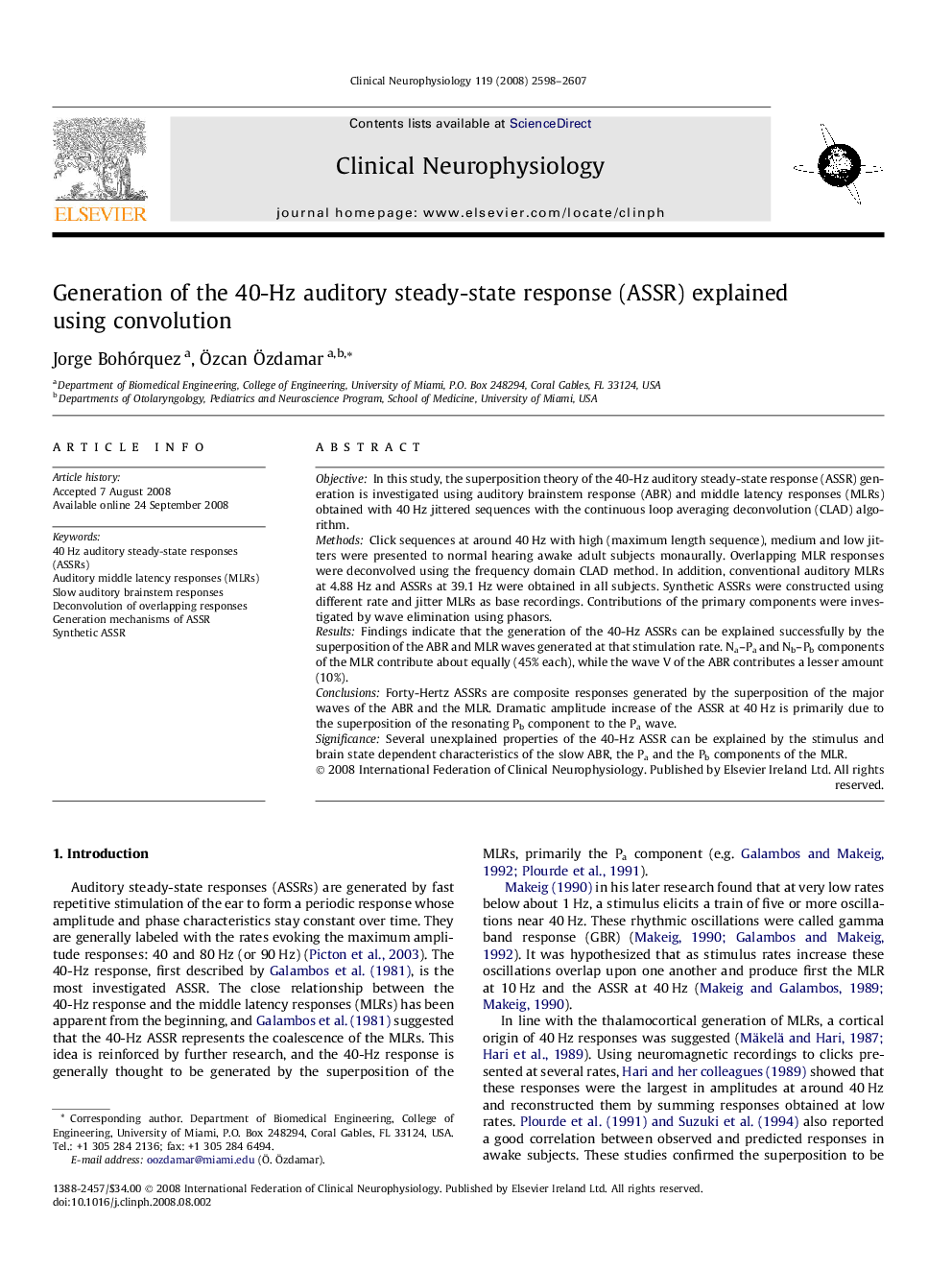| Article ID | Journal | Published Year | Pages | File Type |
|---|---|---|---|---|
| 3047021 | Clinical Neurophysiology | 2008 | 10 Pages |
ObjectiveIn this study, the superposition theory of the 40-Hz auditory steady-state response (ASSR) generation is investigated using auditory brainstem response (ABR) and middle latency responses (MLRs) obtained with 40 Hz jittered sequences with the continuous loop averaging deconvolution (CLAD) algorithm.MethodsClick sequences at around 40 Hz with high (maximum length sequence), medium and low jitters were presented to normal hearing awake adult subjects monaurally. Overlapping MLR responses were deconvolved using the frequency domain CLAD method. In addition, conventional auditory MLRs at 4.88 Hz and ASSRs at 39.1 Hz were obtained in all subjects. Synthetic ASSRs were constructed using different rate and jitter MLRs as base recordings. Contributions of the primary components were investigated by wave elimination using phasors.ResultsFindings indicate that the generation of the 40-Hz ASSRs can be explained successfully by the superposition of the ABR and MLR waves generated at that stimulation rate. Na–Pa and Nb–Pb components of the MLR contribute about equally (45% each), while the wave V of the ABR contributes a lesser amount (10%).ConclusionsForty-Hertz ASSRs are composite responses generated by the superposition of the major waves of the ABR and the MLR. Dramatic amplitude increase of the ASSR at 40 Hz is primarily due to the superposition of the resonating Pb component to the Pa wave.SignificanceSeveral unexplained properties of the 40-Hz ASSR can be explained by the stimulus and brain state dependent characteristics of the slow ABR, the Pa and the Pb components of the MLR.
